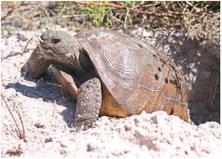At its state-wide commission meeting last week, the Florida Fish and Wildlife Conservation Commission approved rules creating a nocost livery permit and adding new topics and requirements for boating safety education.
The new FWC rules align with recent legislative changes, and are intended to improve public safety, the FWC said, noting the hope is new boating safety education topics will encourage safer operation by boaters.
Vessels for lease or rent will require a livery permit; new rules create the framework for requesting, receiving and renewing the no-cost livery permit. New rules establish consequences for violation of the new rules. No-cost livery permits will expire on the birthday of the official agent of the livery requesting the permit.
In addition to changes regarding liveries and pre-rental and preride instruction, new components were also added to the required course curriculum for FWC-approved boating safety education courses.
“These changes are yet another positive step in our efforts to foster a safe and responsible environment for everyone to enjoy the world-class boating Florida has to offer,” said FWC Boating and Waterways Section Leader Maj. Rob Beaton.
As for updated Gopher Tortoise Permitting Guidelines, these will better protect gopher tortoises by encourage relocations to protected sites, clearly defining roles and responsibilities in the relocation process, the FWC said.
The permitting guidelines support a new Gopher Tortoise Management Plan, created by the FWC with the goal of restoring and maintaining secure populations of gopher tortoises throughout Florida, so the species no longer warrants state protection listing.
In Florida, the gopher tortoise is state-listed as Threatened. Both the tortoise and its burrow are protected under state law. Property owners must obtain permits from the FWC before land clearing or development takes place, and tortoises must be captured and relocated to FWC-authorized recipient areas.
Initial Gopher Tortoise Permitting Guidelines were approved in 2008, and several revisions over the years have allowed for continued improvement in the permitting process and in conservation for the species.
The gopher tortoise occurs in parts of all 67 Florida counties and in neighboring states. The tortoise is known as a keystone species, and its burrows serve as important refuges for hundreds of native animals, including imperiled species such as the Eastern indigo snake and the Florida burrowing owl. To learn more about gopher tortoises and the FWC’s Gopher Tortoise Program, visit MyFWC. com/GopherTortoise.




